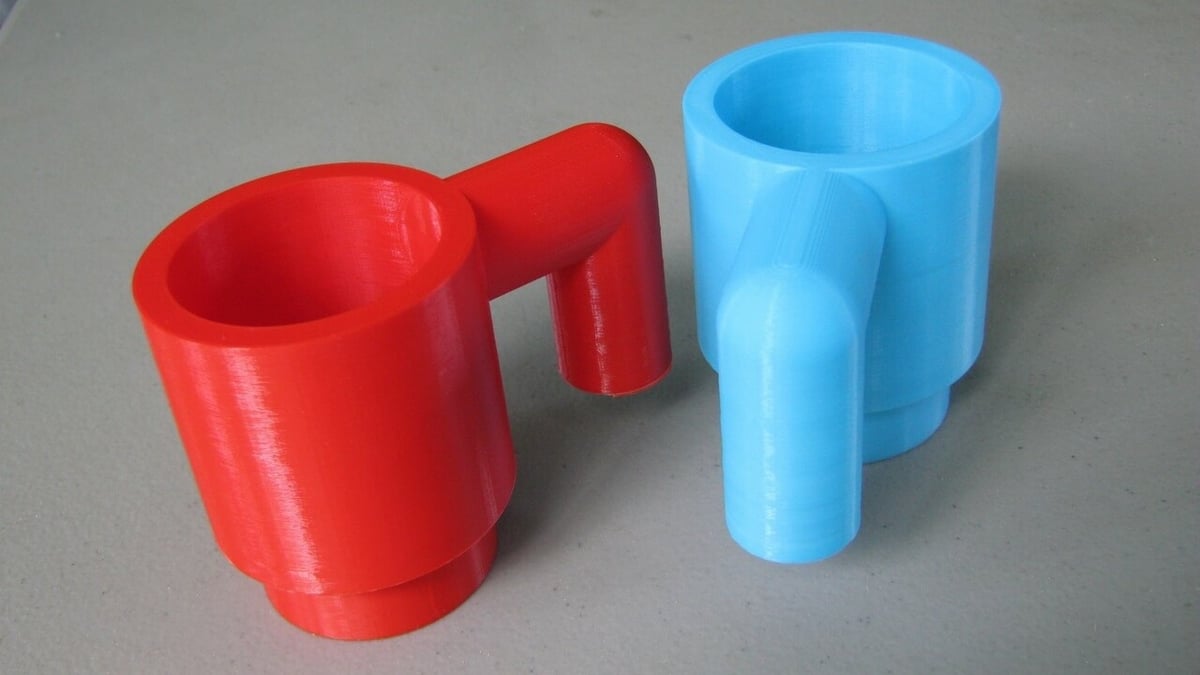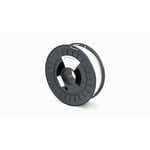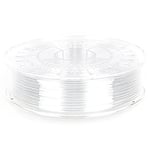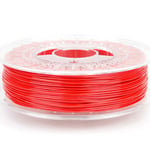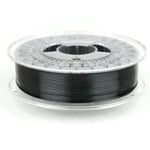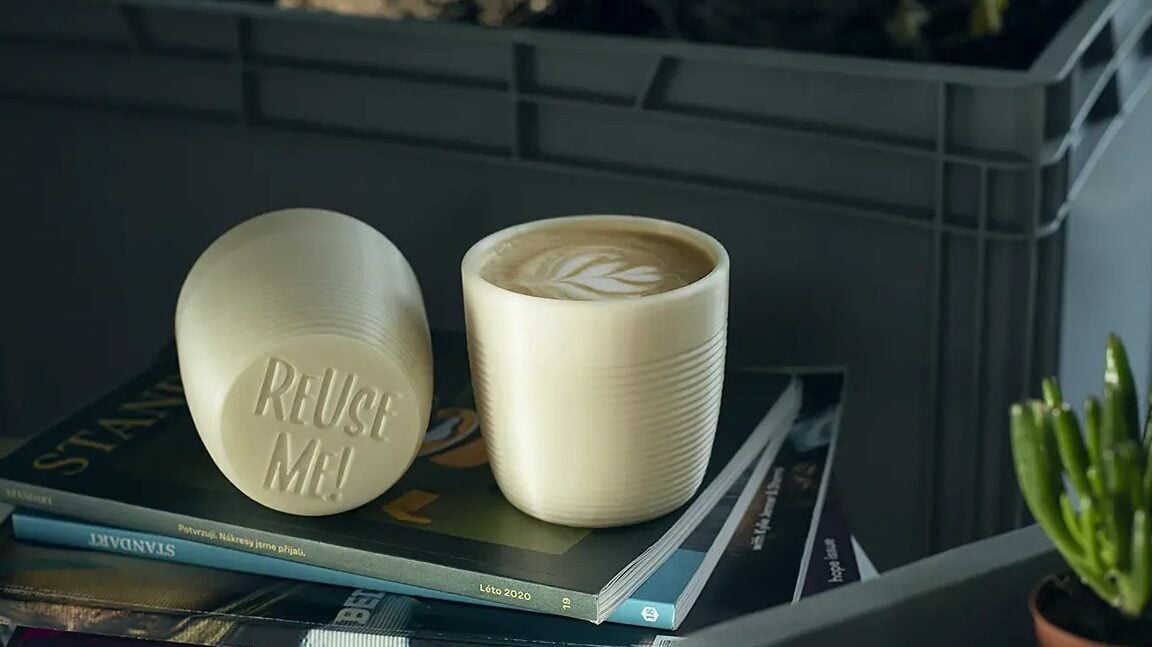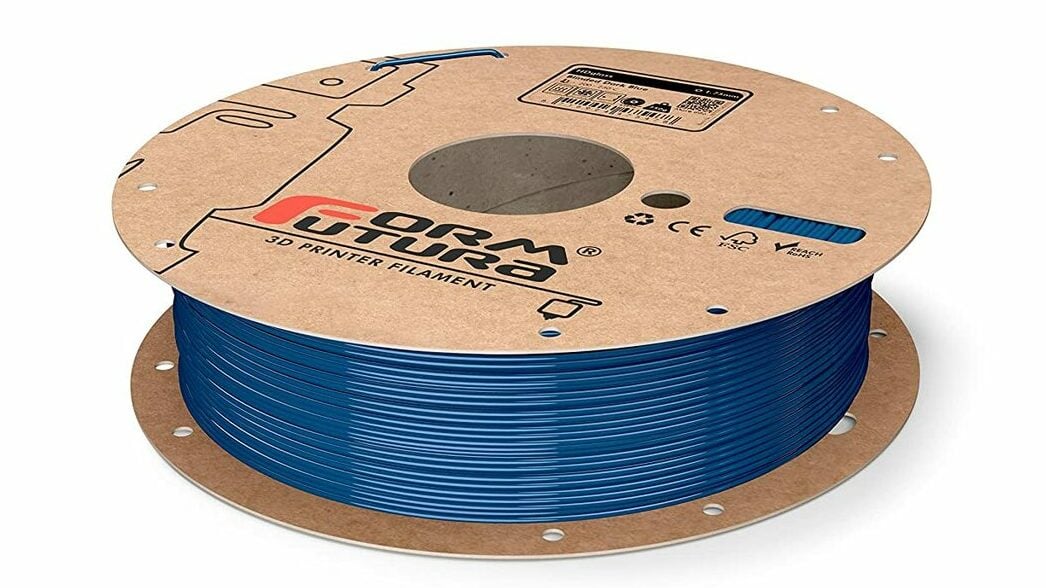While 3D printing allows us to virtually reproduce many pieces of houseware, oftentimes the material is the limit. You can’t print a trivet out of PLA because the heat would immediately melt it. Similarly, you can’t print something you eat off or store your food out of generic filament; a food-safe material is needed.
And while food-safe PLA is great for cold foods, a low-temperature resistance makes it unsuitable for hot beverages or dishwasher use. So, in this article, we’ll cover a list of non-PLA materials that are certified for food compatibility.
As a reference, we used the FDA (US Food and Drug Administration) and EFSA (European Food Safety Authority) regulations and guidelines. You can learn more about the requirements by consulting the FDA Code of Federal Regulations (CFR) 21 and the EU Commission Regulation No. 10/2011.
Before jumping into the filaments themselves, let’s see a few of the characteristics that make for a good food-safe filament.
A Few Things Explained
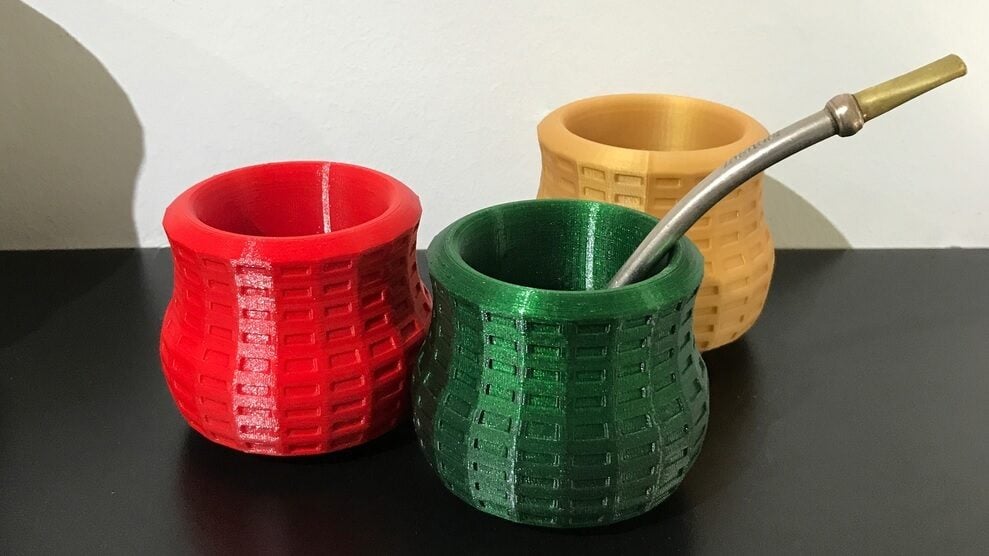
Since the application we’re talking about requires a bit of extra caution, here are a few things to keep in mind while printing with food-safe filament:
- 3D printers aren’t food safe: While a material might be food compatible, the printing process itself is not. When printing, the filament comes in contact with parts of the printer that have handled unsafe materials in the past. During melting, traces of said materials might mix with the food-safe filament. A good (but not perfect) solution is using a cleaning filament when changing spools, before using food-safe filaments.
- Print beds and adhesives may not be food safe: The printer’s bed and the adhesion medium used (painter’s tape, hairspray, stick glue, residues on a rough PEI sheet) might contribute to contamination, too. While many surfaces are rough to grip firmly onto deposited filament, this also makes them harder to clean and prep. A glass bed is easier to clean and offers a neutral surface that doesn’t risk contaminating the bottom layer of the print. Of course, you’ll need to confirm material compatibility before printing.
- Nozzle material matters: Brass isn’t considered to be a food-safe material, therefore a different nozzle is needed. The choice often falls on stainless steel, as most materials adhere poorly to it. You can check out our guide on the best 3D printer nozzles to learn more about what you need to consider.
- Layers should be watertight: If the aim is to make a watertight part to contain liquids, layer adhesion is surely something to keep an eye on. Small features, layer gaps, or creases (whether visible or not) are also great places for bacteria to thrive in. Warm water and dish soap should be sufficient to reduce bacterial population and growth potential. Just don’t slack on other food-safety practices!
- Consider using surface coatings: It’s not a bad idea to coat finished parts with a couple layers of food-safe epoxy resin or silicone. Not only does it help with making the part watertight, but it also prevents bacterial growth and leftover accumulation in hard-to-reach spots. In many cases, the resin may additionally offer an extra layer of protection against scratches, cuts, and dents.
Different Meanings
Looking around, one can find discrepancies across the documentation provided by manufacturers. Many claim compliance (or more often “approval”) with FDA or EFSA regulations, but the documentation they provide to back those claims may be non-specific or non-existent.
It’s important to underline that the FDA has stated that they “object strongly to the phrase ‘Approved by FDA’ in connection with the marketing or labeling of a product” and suggests that, in case the product does respect the regulations, “a firm may state that it is selling a regulated food additive or that its chemicals are in compliance with the food additive provisions of the Federal Food, Drug, and Cosmetic Act.”
Moreover, it’s not only important that the material itself is food-safe, but also that the handling practices during manufacturing meet certain standards. The EU has also published regulation No. 2023/2006 on good manufacturing practices that details how to handle, pack, and store finished products with intended contact with food. This standard in particular can be difficult to confirm from some manufacturers.
Considerations

In light of the various claims made across different manufacturers, we’ve organized our food-safe filament selections into three different categories. If the filament meets FDA or EFSA standards defined above for food contact and is intended for use as a food safe-filament (and manufactured accordingly), it’ll be under the “Dedicated Options” category.
Other manufacturers declare compliance and provide suitable documentation, but since the product isn’t dedicated specifically to food contact applications, it’ll be categorized as “Compliant”.
The last category, “Claims Compliance”, includes products that don’t provide documentation or specific standards to back their claim of compliance with food-contact regulations.
In addition to their compliance with food-contact standards, we assembled this list with a wide variety of base materials in mind. With the following filaments, you can not only substitute PLA but also go beyond its limits.
And finally, all of the following filaments are compatible with a consumer-grade printer with a heated bed and normal temperature ranges. Therefore, professional materials (available only for proprietary machines or generally not accessible to the majority of users) are excluded.
Dedicated Options
The following options are specifically targeted for food-contact applications and come from manufacturers that comply with specific FDA or EFSA standards. These are the go-to for those who are looking for a dedicated food-safe filament.
Recreus PP3D
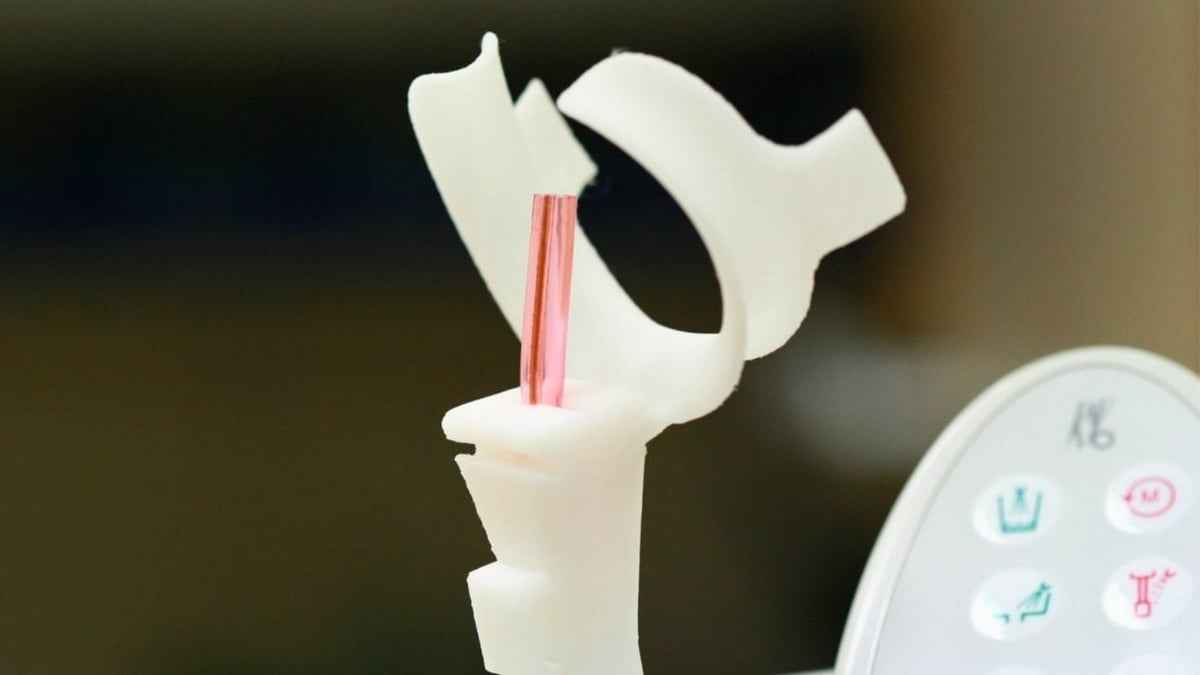
Recreus PP3D is a polypropylene (PP) filament that complies with the stringent standards of both the FDA and EFSA and is thus authorized for food contact applications in the US and EU. This food-safe filament is a result of collaboration with Repsol, a company with expertise in PP development, as reflected in the compliance documents issued in Repsol’s name.
Apart from being non-toxic, this filament also boasts impressive chemical resistance and toughness. According to the manufacturer, Recreus PP3D delivers exceptional finishes, with layers seamlessly integrated to create a polished surface reminiscent of injection-molded objects. In addition, the natural color option can endure autoclaving. This is a sterilization process that uses steam at ~134 ºC under pressure, making it a proven choice for medical and dentistry applications.
Recreus also provides a primer with the filament. Applying this primer to the print bed before printing and heating it to approximately 40 °C makes the printing process even smoother. Moreover, the primer can be used for one or two additional prints, and removal is as easy as heating the bed to around 85 °C.
- Colors: Natural, black
- Sizes: 1.75 mm, 2.85 mm (0.6 kg)
- Recommended settings: Hot end 230 °C, heated bed 40 °C
- Price: ∼$75/kg (~$45 for 600-g spool)
EolasPrints TPU

EolasPrints TPU promises to be one of the most flexible and food-safe filaments around, with a Shore hardness rating of 93A. And, with a palette of 20 color options, you can print a rainbow of parts and objects. While EolasPrints TPU is authorized for food contact, the certificate of compliance is only available upon request.
As per the technical datasheet, the manufacturer suggests keeping the part cooling fan at 100%. However, to achieve optimal results, it’s best to refrain from using cooling for the first few layers, gradually introducing it at lower settings. This food-safe filament is compatible with a wide range of FFF and FDM 3D printers, and you can even contact the company for a custom shore.
In addition, EolasPrints offsets emissions through carbon-neutral shipping on all orders. So, you can feel good about your purchase knowing that you’re supporting a company that cares about the environment.
- Colors: 20 colors available
- Sizes: 1.75 mm (0.25 kg, 1 kg, 2.5 kg), 2.85 mm (1 kg, 5 kg)
- Recommended settings: Hot end 190-215 °C , heated bed 0-60 °C
- Price: ∼$30/kg
Filamentive PETG
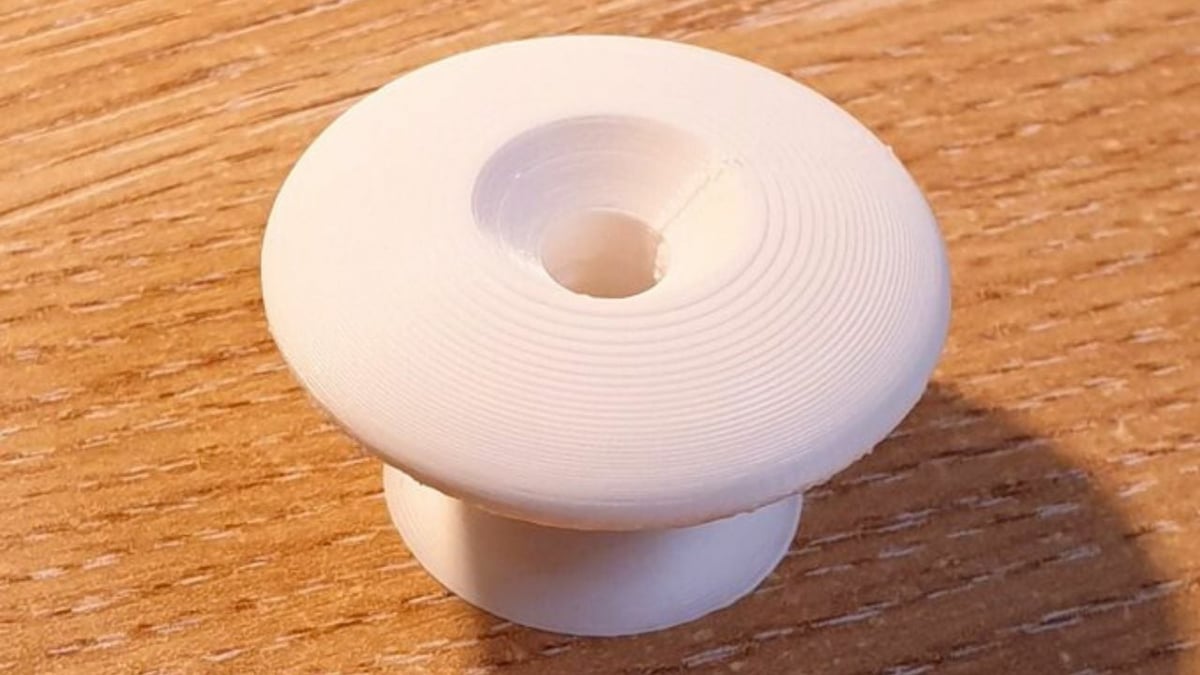
Filamentive offers a wide range of food-safe filaments, including ABS, ASA, and PETG. Not all of the colors in these materials, however, comply with ESFA regulations. For example, their ASA comes in three classic colors (black, gray, and white), but only the white variant is certified as food-safe.
If you’re looking for a darker food-safe filament, take a look at their ABS. While lacking UV resistance, the black ABS stands as a suitable choice if your printed parts or model requires strength.
If you’re looking for more color variety and resilience to sunlight, Filamentive’s food-safe (r)PETg presents itself as a clear alternative. The food-safe options include transparent, black, and dark blue. However, it’s essential to note that PETG might not match the strength of ASA or ABS, making it a trade-off.
At the time of writing, some of the food-safe certified colors in ABS and ASA are scarce, but all three of the PETG colors are commercially available.
- Color: Black, transparent, and blue
- Sizes: 1.75 mm (0.75 kg, 1 kg)
- Recommended settings: Hot end 195-235 °C, heated bed 50-80 °C
- Price: ∼$40/kg
Filaments.ca True Food Safe PETG
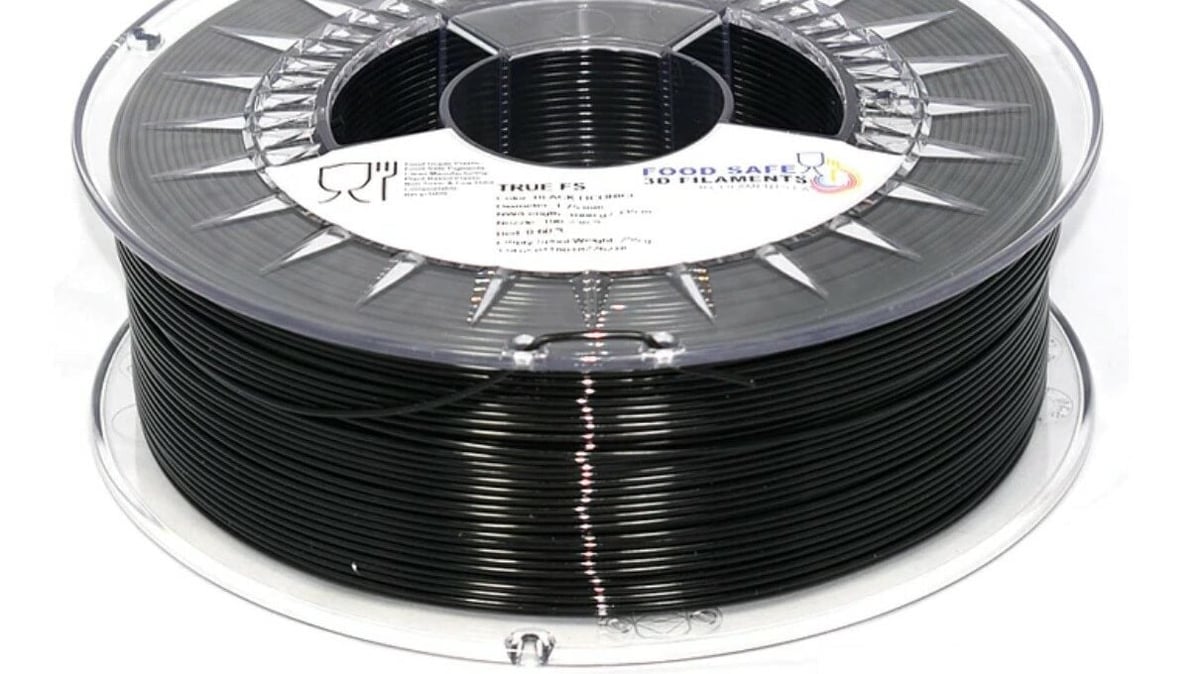
A few years ago, Filaments.ca made the news for launching the first food-grade, food-compatible PLA. And it would seem that their huge success led them to repeat the formula using PETG.
A blog post from 2019 quotes “USP class VI & ISO 10993-1 certified” for the natural color version. That certification has more to do with biocompatibility with the human body rather than food compatibility. Although given medical-grade standards are arguably more stringent than food-contact standards, we included it in this section. The manufacturer states that they provide compliance documentation with every order. Perhaps for these reasons, the product page recommends using it for cookie cutters, cake toppers, and custom-made utensils.
True Food Safe PETG can be printed using your favorite PETG settings. Filaments.ca recommends keeping the fan at 100%, which might be a misprint, as it’s best not to cool PETG too quickly.
- Colors: Eggshell white, natural, black
- Sizes: 1.75 mm (1 kg)
- Recommended settings: Hot end 235-245 °C, heated bed 60-90 °C
- Price: ∼$39/kg
Treed ABS Food
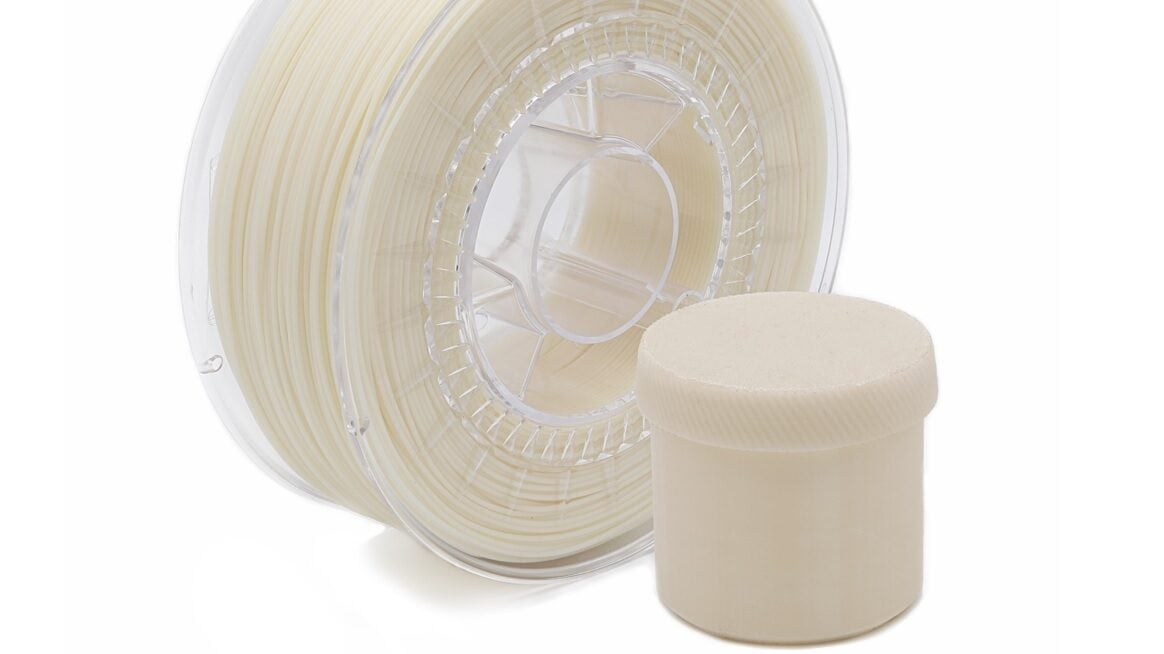
Even if ABS isn’t as popular as PLA, it’s far from useless. Treed’s ABS Food filament, for example, complies with EFSA regulations and good manufacturing practices. And thanks to ABS’ higher heat deflection temperature and lower density (compared to PLA), it could be a low-cost lifesaver.
This formulation doesn’t improve on printability or mechanical properties. As it’s ABS, the material may still refuse to stick to the bed and warp when cooling down. Treed also specifies in the datasheet that it shouldn’t be left at printing temperature in the nozzle for more than 20 minutes. A lower standby temperature of 210 °C is recommended. This is particularly important for dual-extrusion printers. A slower print speed of 30-60 mm/s is recommended, as well as keeping the part cooling fan at around 0-70%.
For those of you who want to get your hands on ABS Food, the majority of the retailers who sell it are based in Europe.
- Color: Natural
- Sizes: 1.75 mm, 2.85 mm (both available in 1-kg, 2-kg, 5-kg, 10-kg spools)
- Recommended settings: Hot end 235-250 °C, heated bed 90 °C
- Price: ∼$45/kg
Compliant
These next filaments are compliant with specific FDA or EFSA standards, though their primary purpose isn’t limited to food-contact applications.
PPprint P-Filament 721
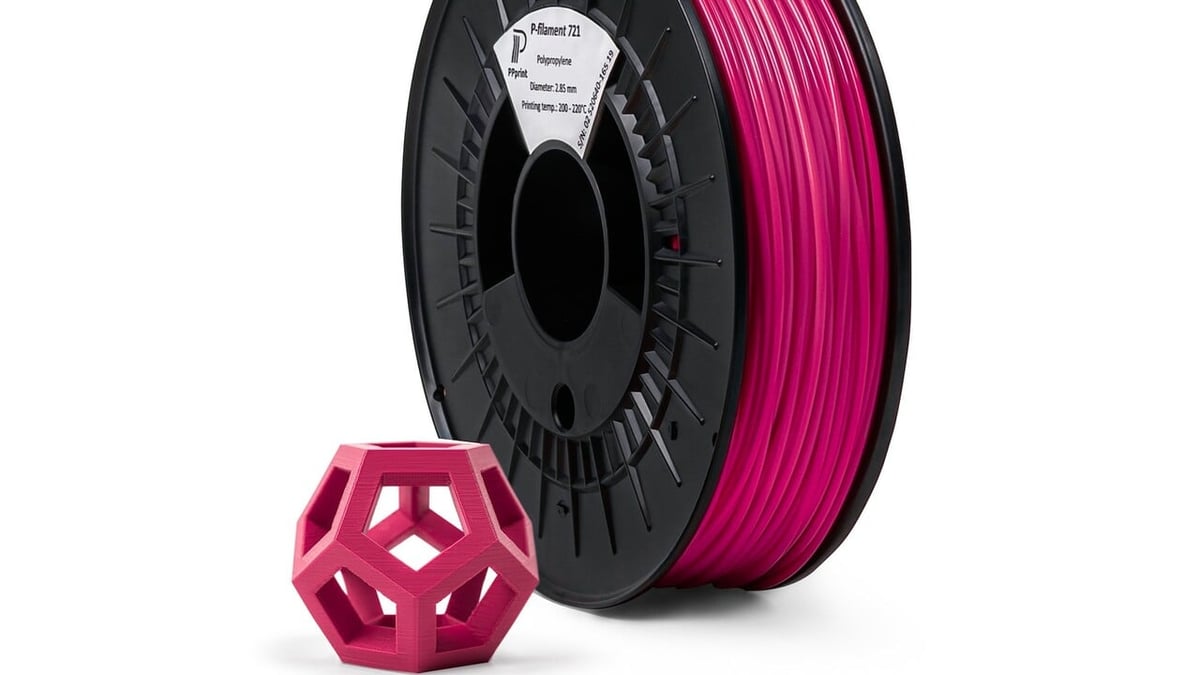
PPprint’s P-filament 721 is an engineering mix based on polypropylene (PP) aimed at chemical resistance and food safety. Boasting a high melting point of 137 °C and a very respectable impact resistance, the downside of PP is usually the cost. Although there are definitely cheaper entries on the list, the excellent properties of PP could be worth it. You’ll also find a wide variety of colors, including purple, pink, mint green, and many more.
Like other polypropylenes, it’s not the easiest to print. P-Filament 721 doesn’t require drying before printing but is reportedly very picky with type of the build plate used. The manufacturer recommends using their own surface material and bonding agent, although the community reports that PP can be printed successfully with a very hot bed and a polypropylene sheet or painter’s tape. Also, be sure to avoid PEI sheets. The manufacturer also advises that “P-filament should be used as soon as possible after opening to ensure constant print performance”.
- Colors: 16 colors available
- Sizes: 1.75 mm, 2.85 mm (both available in 0.6-kg, 1.8-kg spools)
- Recommended settings: Hot end 200-220 °C , heated bed 50-70 °C
- Price: ~$85/kg (~$50 for 600-g spool)
ColorFabb HT
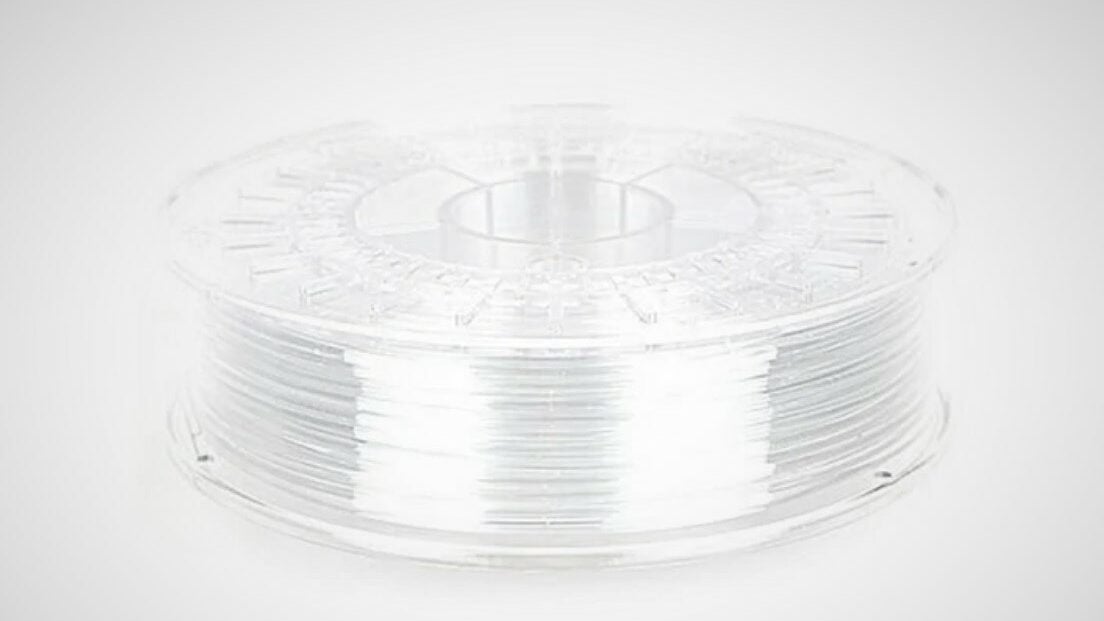
During the last few years, ColorFabb has expanded its lineup to high-performance and engineering materials like the HT, nGen, and XT co-polyester filaments. And while they all share a similar nature, they differ in printability and mechanical properties. For each of these filaments, ColorFabb provides compliant documentation for the base polymer rather than the full formulation. However, according to their Safety Data Sheet (SDS), the only notable additive they use is titanium dioxide (for color), which is generally food safe. But if you’re looking to totally avoid that, you can always opt for the black or clear color variants.
ColorFabb HT is a temperature-resistant, engineering-grade blend based on a proprietary polymer developed by the Eastman Chemical Company. It also boasts incredible mechanical properties, with a tensile breakpoint of 52 MPa. Another great characteristic is the fact that it doesn’t contain styrene (a known carcinogenic compound), making it particularly suitable for printed dishware. A service temperature of 100 °C works great for hot drinks, too.
The clear variant can be sanded down to obtain a see-through effect that looks incredibly similar to a transparent resin print. The surface finish (if printed properly) is smooth and glossy, with good layer adhesion.
HT can be printed at speeds of around 30-50 mm/s and 0-30% for the part cooling fan. A BuildTak surface is recommended for better adhesion, but a heated glass bed should suffice in most cases.
- Colors: Black, dark gray, white, clear
- Sizes: 1.75 mm, 2.85 mm (both available in 0.7-kg, 2-kg spools)
- Recommended settings: Hot end 250-280 °C, heated bed 100-120 °C
- Price: ∼$60/kg (~$40 for 700-g spool)
ColorFabb nGen
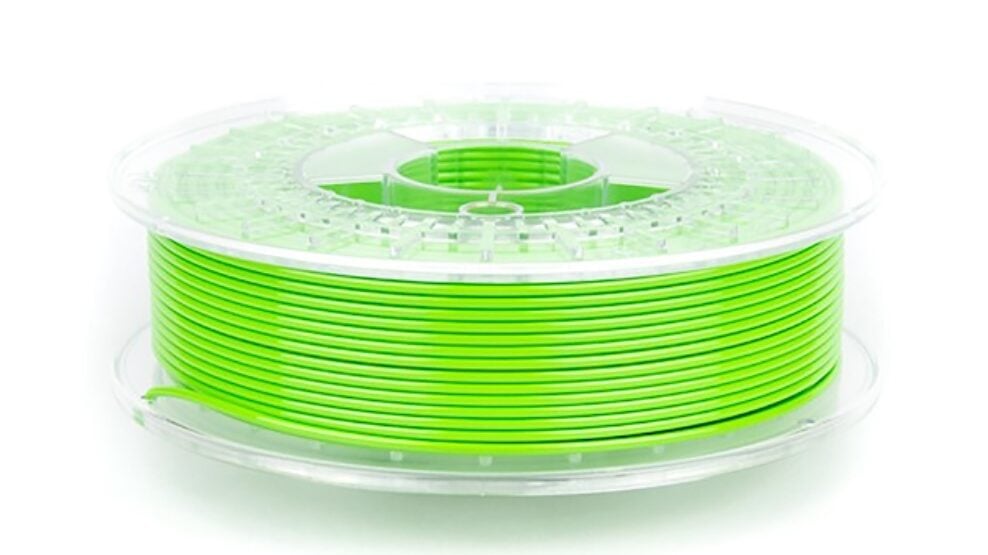
ColorFabb nGen has become quite popular in the seven years since it was launched. It’s a low-cost, easy-to-print filament with good mechanical properties and a glass transition temperature of 85 °C. The high-flow characteristic makes it particularly suitable for high-speed printing, and the high melt stability avoids mechanical discrepancies in parts printed at different temperatures. According to the SDS (or lack of), the black, dark green, and red color options are exceptionally safe picks.
Just like HT, nGen is styrene-free and emits a minimal odor. Otherwise, it can be printed upwards of 70 mm/s, with the fan at 50%. In order to ensure good adhesion and minimal warping, a heated bed is recommended, but BuildTak should get the job done.
- Colors: 14 colors available
- Sizes: 1.75 mm, 2.85 mm (both available in 0.75-kg, 2.2-kg spools)
- Recommended settings: Hot end 220-240 °C, heated bed 75-85 °C
- Price: ∼$40/kg (~$30 for 750-g spool)
ColorFabb XT
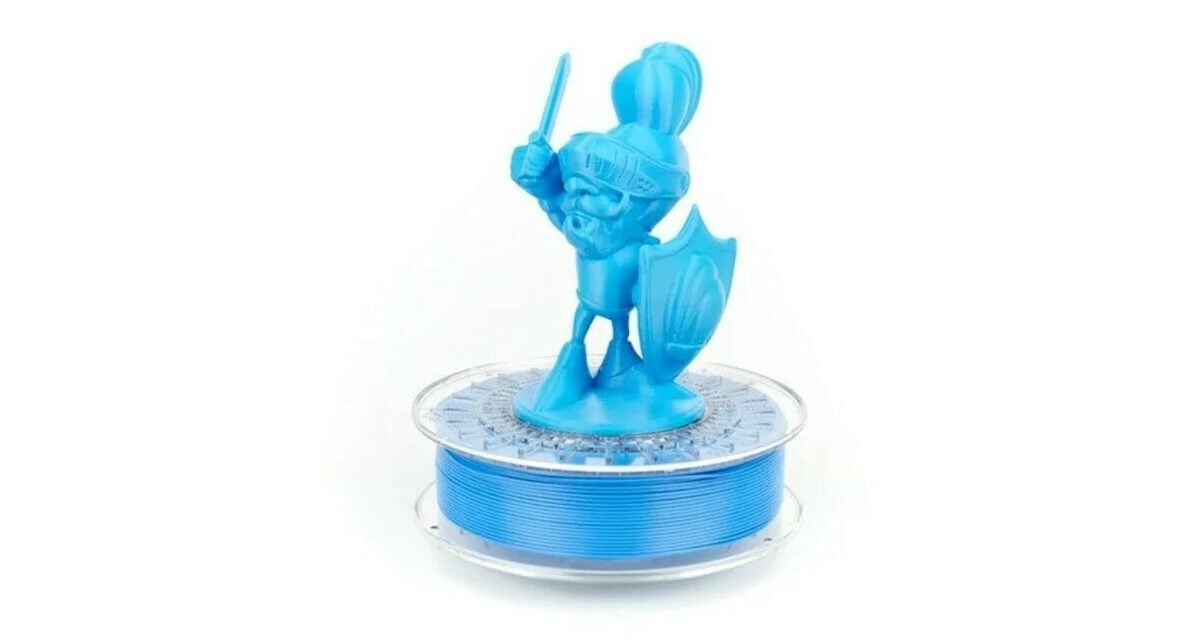
ColorFabb XT is the least tough of the trio. With a tensile strength that’s half of that registered by HT and a heat deflection temperature of 62 °C, it’s not intended for high-stress scenarios. Still, it’s both styrene- and BPA-free, so with a little extra caution, it should prove to be tough enough for many scenarios. It’s also quite cheap and easy to print, making it a decent entry-level engineering material. Like the other ColorFabb filaments, the black and clear color options are the most food-contact-friendly.
XT can be printed at upwards of 70 mm/s, with a 50-90% fan speed. The specs datasheet serves as a reference for further speed and temperature settings, but it’s up to the user to find what works best for them.
A glue stick or painter’s tape on the build plate is recommended to ensure the best adhesion and the least amount of warping.
- Colors: 8 colors available, including black, gray, white, and blue
- Sizes: 1.75 mm, 2.85 mm (both available in 0.75-kg, 2.2-kg spools)
- Recommended settings: Hot end 240-260 °C, heated bed 60-70 °C
- Price: ~$50/kg ($30 for 750-g spool)
Extrudr PETG
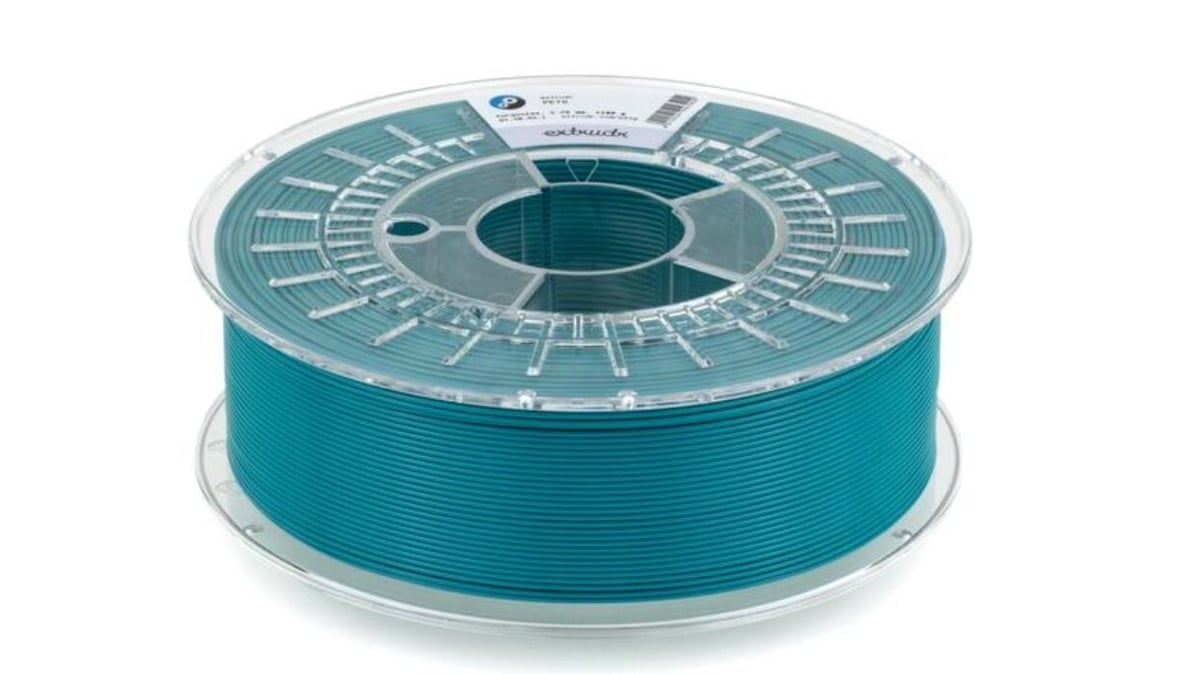
If fancy materials aren’t your piece of cake, what about a good ol’ PETG? Extrudr’s PETG line-up keeps the price low and material characteristics that are familiar to hobbyists.
PETG is, generally speaking, an impact-resistant plastic with a glossy finish and a high-melt viscosity. (You can learn more from our article on PLA vs. PETG.) Time to repair that old salad spinner that you didn’t want to throw away?
As is common for PETG, this material can be printed at speeds of around 40-60 mm/s. Mind you, due to the higher melt viscosity, the higher the speed, the lower the surface quality will be. The fan shouldn’t be set at more than 50%.
- Colors: 43 colors available
- Sizes: 1.75 mm (1.1 kg, 2.5 kg), 2.85 mm (1.1 kg, 2.5 kg, 5 kg, 10 kg)
- Recommended settings: Hot end 210-230 °C, heated bed 60-70 °C
- Price: ∼$41/kg (~$45 for 1.1-kg spool)
Claim Compliance
Below is a list of manufacturers that claim their filament is food-contact compliant, but were excluded from the other categories because no specific material or manufacturing standards were provided.
Fillamentum
- NonOilen is a PLA/PHB (polyhydroxy butyrate) blend with a high-temperature resistance of 110 °C. This makes it dishwasher-safe but has no impact on the printing temperature, which remains the same as PLA. NonOilen is also claimed to be especially biodegradable, with a decomposition rate apparently three times faster than that of regular PLA.
- Flexfill TPE is a strong and flexible material with a Shore hardness level of 90-96A. It’s resistant to a defined set of acids, alcohols, alkalis, and water, and it claims to be safe to use in electrical and electronic equipment (it’s even RoHS compliant). It’s also BPA-free and emits little odor.
- Polypropylene PP 2320 has great resistance against moisture and water, high temperatures (up to 100 °C), and salts. It’s practically designed to make pasta strainers! It also doesn’t become brittle at temperatures below 0 °C.
- HIPS is a BPA-free and lightweight polymer with good water resistance, including at higher temperatures. Its solvability in D-limonene makes it a great candidate for support printing, although the mechanical specs show that it cannot do much more. The low tensile strength and impact resistance limit the possible use cases.
FormFutura
- EasyFil HIPS is an improved blend, softer and more flexible with a smooth matte finish and limited warping during the print time. While it might not shine for mechanical strength, it’s more impact resistant compared to regular HIPS and also quite lightweight.
- FormFutura HDglass is an improved PETG blend whose clear variant has a high gloss and ultra-transparent effect, with a 90% optical light transmittance. This opens the road to stunning visuals, especially for decorative food displays.
- FormFutura PythonFlex is a highly elastic TPU (stretching up to 4.5 times its length before breaking) with improved resistance to oil, greases, microorganisms, and abrasion. The main issue with PythonFlex is its extreme hygroscopicity: If exposed to high moisture levels for too long, it will require a dehydration cycle at 65 °C to get back on track.
Fiberlogy
- CPE HT is a copolyester blend that advertises itself as a more beginner-friendly alternative to PC. BPA, BPS, and styrene free, it’s indicated for dishwasher use, as well as other stressing applications such as chemical sterilization or UV exposure. Fiberlogy recommends using PVA glue to ensure perfect adhesion.
3DJake
- 3DJake’s PCTG is something you should consider if you want a filament similar to PETG but with better toughness and impact resistance. According to 3DJake, their PCTG is suitable for food contact, as it’s BPA-free and lacks phthalate-based plasticizers. The filament’s temperature and chemical resistance is also emphasized, along with high optical clarity and excellent printability. The user reviews are positive and reflect some of the brand’s claims, with many makers noting the better printability compared to other PETG filaments.
Taulman3D
- Alloy 910 is a nylon co-polyester that offers the best of two worlds. A very high tensile modulus combined with strong temperature and chemical resistance makes it perfect for tougher environments. If you need to replace a broken part in a blender, it should do the trick.
License: The text of "The Best Food-Safe 3D Printer Filaments in 2024" by All3DP is licensed under a Creative Commons Attribution 4.0 International License.
CERTAIN CONTENT THAT APPEARS ON THIS SITE COMES FROM AMAZON. THIS CONTENT IS PROVIDED ‘AS IS’ AND IS SUBJECT TO CHANGE OR REMOVAL AT ANY TIME.

